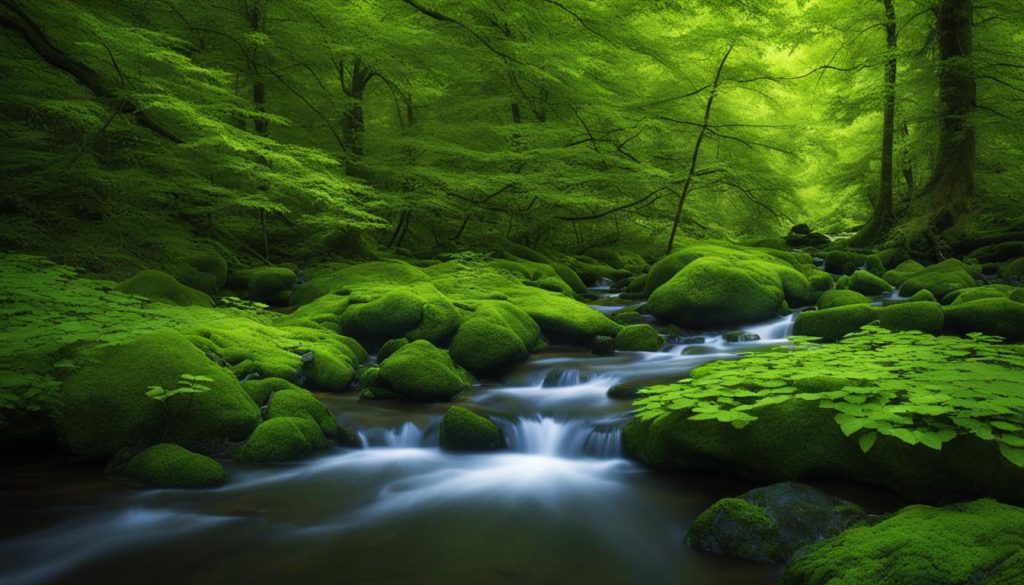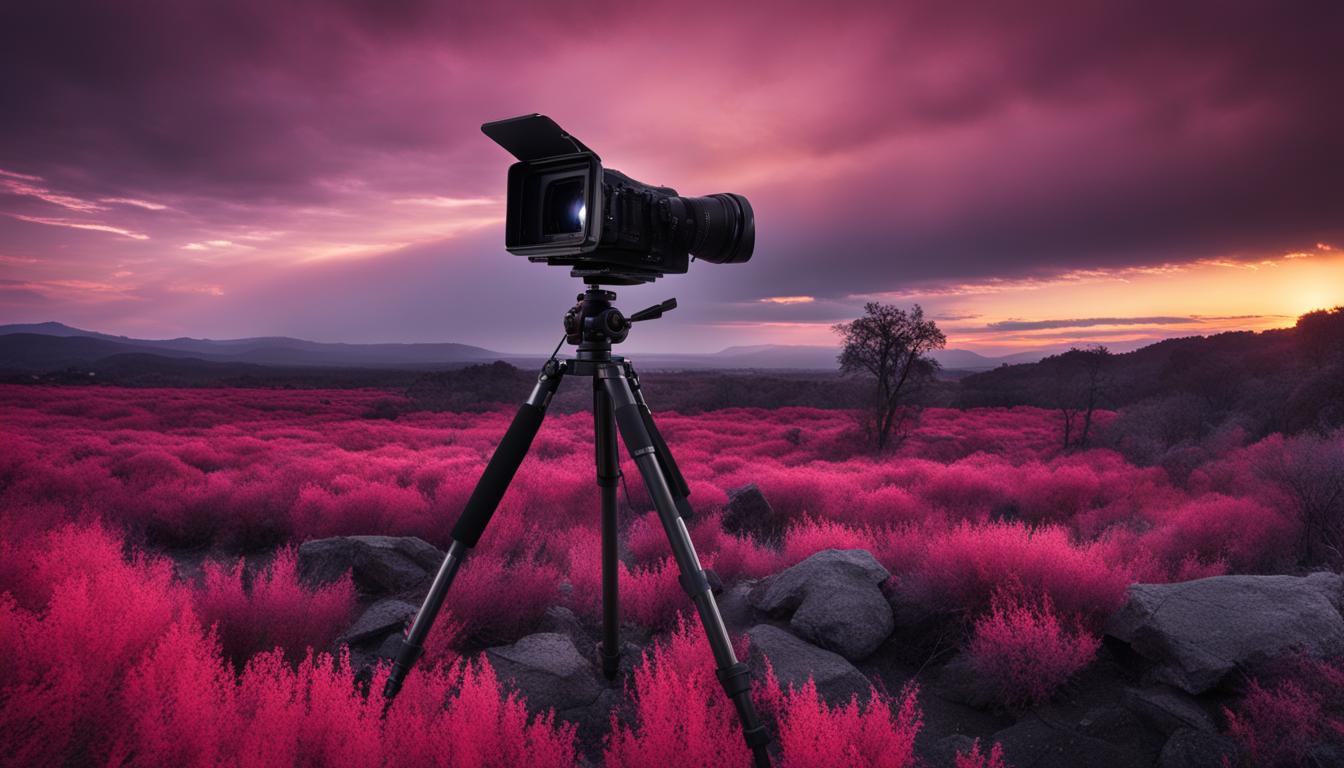Are you interested in exploring the hidden beauty of the unseen world? Infrared photography might be just the thing for you. This unique technique captures images beyond the visible spectrum, revealing a world of colors and textures that are otherwise invisible to the naked eye.
Whether you’re a seasoned photographer or just starting, it’s essential to have a checklist of all the necessary tools and techniques for successful infrared photography. This article provides a comprehensive guide to mastering the art of infrared photography, with helpful tips and tricks to help you capture stunning shots.
Key Takeaways:
- Having the right gear and accessories are crucial for successful infrared photography.
- Long exposure and proper white balance adjustment are key techniques to master.
- Composition and subject selection play an important role in creating visually stunning infrared images.
- Understanding the characteristics of infrared light and selecting the right camera for infrared photography is essential.
- With the right checklist and tips, you can capture breathtaking infrared photos and explore the unseen world.
Understanding Infrared Photography
Have you ever wondered what infrared photography is and how it works? Infrared photography captures light that is invisible to the naked eye, allowing us to witness the world in a new and fascinating way.
Infrared light is a type of electromagnetic radiation that has longer wavelengths than visible light. It is absorbed by objects differently than visible light and can reveal details that are not seen in traditional photography.
When captured with a special camera that can detect infrared light, the resulting image showcases breathtaking colors and contrasts, making infrared photography a popular choice for landscape and fine art photography.
Understanding how infrared photography works, and the unique characteristics of infrared light, can help you master this captivating art form and create stunning images that showcase the unseen world.
Choosing the Right Camera for Infrared Photography
Choosing the right camera is crucial for capturing stunning infrared photographs. Look for a camera with a high resolution and low noise, as they can help create sharp and detailed images. Additionally, you can opt for a full-spectrum camera and convert it to an infrared camera, or buy an infrared-converted camera.
When considering conversion, the most common options are 590nm and 720nm wavelengths, each producing different effects. The 590nm filter produces warm and vibrant colors, while the 720nm filter creates a classic black and white look.
It’s important to note that not all cameras are suitable for conversion. Research the brand and model of your camera to see if it can be converted, or consider purchasing a camera specifically designed for infrared photography.
Choosing the right camera for infrared photography can be a daunting task, but with the right research and knowledge, you can find the perfect camera suited for your infrared shooting needs.
Essential Gear for Infrared Photography
To take your infrared photography to the next level, you’ll need the right equipment. Here’s a rundown of the gear and accessories you must consider for stunning infrared shots.
Infrared Filters
Infrared filters are critical for reducing visible light, allowing only infrared wavelengths to reach the camera sensor. Without an infrared filter, shooting infrared photos is nearly impossible. Pro tip: Choose an infrared filter with a cutoff wavelength of 720 nm for traditional infrared photography or 850 nm for black and white infrared photography.
Tripod
Using a tripod is essential for minimizing camera shake in long exposure shots, which are a staple of infrared photography. A sturdy tripod provides stability and allows for steady framing and composition. Pro tip: Look for a tripod that’s lightweight, durable, and easy to adjust.

Remote Shutter Release
A remote shutter release allows for hands-free control of your camera, minimizing camera shake and ensuring sharper shots. A wired or wireless remote shutter release is ideal for infrared photography, as it allows you to take long exposure shots without disturbing the camera’s position. Pro tip: Opt for a wireless remote shutter release for greater flexibility and convenience.
Remember, having the right gear is half the battle in capturing exceptional infrared shots. With infrared filters, a tripod, and a remote shutter release, you’ll be well on your way to creating stunning, otherworldly infrared photos.
Best Settings and Techniques for Infrared Photography
To create stunning infrared images, it’s essential to choose the right settings and techniques. Here are some tips to help you capture breathtaking infrared photos:
Long Exposure
Infrared light has a longer wavelength than visible light, making it particularly suited to long exposure photography. When shooting infrared, longer exposure times can help to capture more light, resulting in more detailed and vibrant images. Experiment with different shutter speeds to find the perfect balance between light and detail.
White Balance Adjustment
White balance is a critical component of infrared photography. Given that infrared light isn’t visible to the human eye, traditional white balance settings can produce inaccurate and discolored images. Adjusting the white balance can correct these issues, producing photos with a natural and vibrant appearance. Consider using a custom white balance setting or adjusting the color temperature in post-processing.
Infrared Photography Settings
When shooting infrared photos, it’s crucial to adjust your camera settings. Switch your camera to manual mode and set the ISO to the lowest possible value to minimize noise. Select a high aperture to ensure a sharp focus across the entire image. Finally, adjust your exposure compensation or use the histogram to ensure that your exposure settings are optimal for the lighting conditions of the scene.
Experiment with Filters
Infrared filters are an excellent way to enhance your infrared photography. They can help to block out visible light and filter in infrared light, producing stunning images with unique and exciting effects. Consider experimenting with different filters to achieve a range of infrared looks and styles.
By applying these settings and techniques, you can take your infrared photography to the next level. Adjust your camera, shoot long exposure, and experiment with filters to produce stunning images that showcase the beauty of the unseen world.
Composition and Subject Selection in Infrared Photography
Composition and subject selection play a crucial role in creating visually compelling infrared images. Whether you’re shooting landscapes, architecture, or people, understanding the principles of composition can help you capture striking images that convey your intended message.
When framing your shots, keep in mind the rule of thirds – a composition technique that involves dividing your frame into a grid of nine squares. Place your main subject at the intersection points or along the lines to create a visually balanced image.
Experiment with different angles and perspectives to add depth and interest to your shots. For example, shooting from a low angle can make your subject appear more prominent and powerful.
When it comes to subject selection, look for elements that reflect infrared light well. Vegetation, water, and architecture with textured surfaces make excellent subjects for infrared photography.
“In infrared photography, it is not the subject itself but rather its infrared reflection that captures the viewer’s attention. Therefore, it’s essential to choose captivating subjects that reflect infrared light well.”
By mastering the art of composition and subject selection, you can create stunning infrared images that captivate and inspire your audience.
Conclusion
Now that you have gone through this comprehensive guide on infrared photography, you have learned how to capture stunning and unique images. With the right equipment and techniques, you can master the art of infrared photography and explore the unseen world that surrounds us.
Remember to always choose the right camera and gear, adjust the appropriate settings and compose your shots creatively. Keep in mind that practice makes perfect, so don’t be afraid to experiment and try new things. With patience and persistence, you’ll be able to create visually captivating and compelling infrared images.
So grab your camera, head outdoors and start capturing the beauty of the unseen world with your new-found knowledge in infrared photography!






